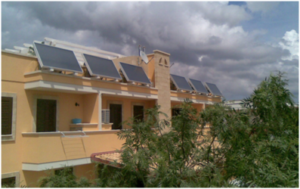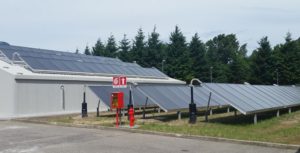Italy: Comparing Conto Termico with Tax Deductions
October 2, 2013
This summer has changed solar thermal clients’ access to incentives in Italy: Since the beginning of August 2013, customers have been able to deduct as much as 65 % of their investment costs into a solar thermal system from tax payments over the next 10 years. In addition, the Portal Termico web page has been offering individuals and companies the option to apply for the new renewable heating incentive – called Conto Termico – since mid-July.
Two aspects make the Conto Termico particularly attractive compared to tax deductions: The fact that there is no deadline and the way the rebate is paid. The Gestore dei Servizi Energetici (GSE) transfers the grants in annual instalments of equal amounts over a period of 2 or 5 years, depending on the size of the system. In contrast, the tax rebates are not paid directly, but show up as a deduction in the annual tax declaration over 10 years, a much longer period (see Table 1).
| Conto Termico | Tax rebates | |
| Level of incentive | X €/m² of gross area per year adding up to 25 – 50 % of investment costs |
65 % of installation costs |
| Maximum system size |
1,000 m² | 130 to 180 m² (corresponding to a maximum expenditure of EUR 92,000) |
| Cumulative annual budget (for all technologies) |
EUR 700 million (private persons and companies) + EUR 200 million (public bodies) paid for by a levy on natural gas tariffs |
– |
| Beneficiaries | Public and private entities | Private entities |
| Incentive period | 2 or 5 years | 10 years |
| Expiration date | No deadline (revision after two years) |
Extended annually / every half year |
| Bureaucracy dealings | Unknown | Wealth of experience |
Table 1: Comparing Conto Termico with 65% tax deductions
The Conto Termico has different levels of subsidies based on the size of the system. In general, larger systems will receive a higher share of their system costs than smaller systems will (see Table 2). But there is the trend of cost-effective thermosiphon systems being granted a higher share of the investment costs than pumped systems. The following table shows that a thermosiphon system with specific system costs of 900 EUR/m² recovers 38 % within two years, whereas the tax credit option repays 65 % over 10 years. In a period of economic crisis, the two-year option of 38% cost recovery is most likely to be favoured over a 10-year payback of 65 %.
| System type | Collector area / system costs |
Conto Termico grants | Level of incentive: Grant / system costs |
| Thermosiphon system |
4 m²; 3,600 EUR | 170 Euro/m² * 2 years * 4 m² = 1,360 EUR |
38 % |
| Pumped system |
4 m²; 5,000 EUR | 170 Euro/m² * 2 years * 4 m² = 1,360 EUR |
27 % |
| Large-scale plant |
1,000 m²; 450,000 EUR |
55 EUR/m² * 5 years * 1,000 m² = 275,000 EUR | 61 % |
Table 2: Different support levels for different system sizes as presented by Riccardo Battisti, Researcher from Ambiente Italia at the SHC2013 conference in September 2013 (see the attached presentation)
Despite being a very recent programme, Conto Termico has the potential to increase market volume significantly, considering the large annual budget of EUR million 700 for renewable heat production in the private, commercial and industrial sector. Table 3 analyses two different scenarios where despite the fact that solar thermal systems will get a low quantity of the total available resources, the results in terms of square meters installed are promising. The first scenario makes the assumption that 12% of the resources will be used for installing solar thermal systems in the first year. This is a fairly conservative share, which corresponds to the share of solar water heaters within the tax deduction mechanism in 2010 (unfortunately, more recent data has not been available).
The second scenario assumes that 20% of the total budget will be used for solar thermal installations in the first year. This is still a reasonable percentage when taking into account that only two other technologies are eligible for incentives in the private sector. Both scenarios allocate 80 % of the resources for solar thermal systems to small systems and 20 % to large systems.
As can be seen in Table 3, the subsidies would push even the conservative 12% scenario to an annual market of 700,000 m², which – when compared to the market volume of 330,000 m² in 2012 – gives an idea of the enormous potential still up for grabs.
| 12% | 20% | ||
| Resources for solar thermal |
million €/year | 84 | 140 |
| Small systems | million €/year | 67 | 112 |
| Large systems | million €/year | 17 | 28 |
| Small systems | m²/year | 395,294 | 658,824 |
| Large systems | m²/year | 305,455 | 509,091 |
| Annual market | m²/year | 700,749 | 1,167,914 |
Table 3: Feed-in Tariff; theoretical market potential calculated based on the assumption that EUR 700 million are available each year to support new installations and that the second and third tranche for already existing installations is covered by additional funding
More information:
Conto Termico: http://www.gse.it/it/Conto%20Termico/Pages/default.aspx#1
This text was written by Valeria Verga, Secretary General of the Italian solar thermal association Assolterm, and Riccardo Battisti, Senior consultant of Ambiente Italia.


